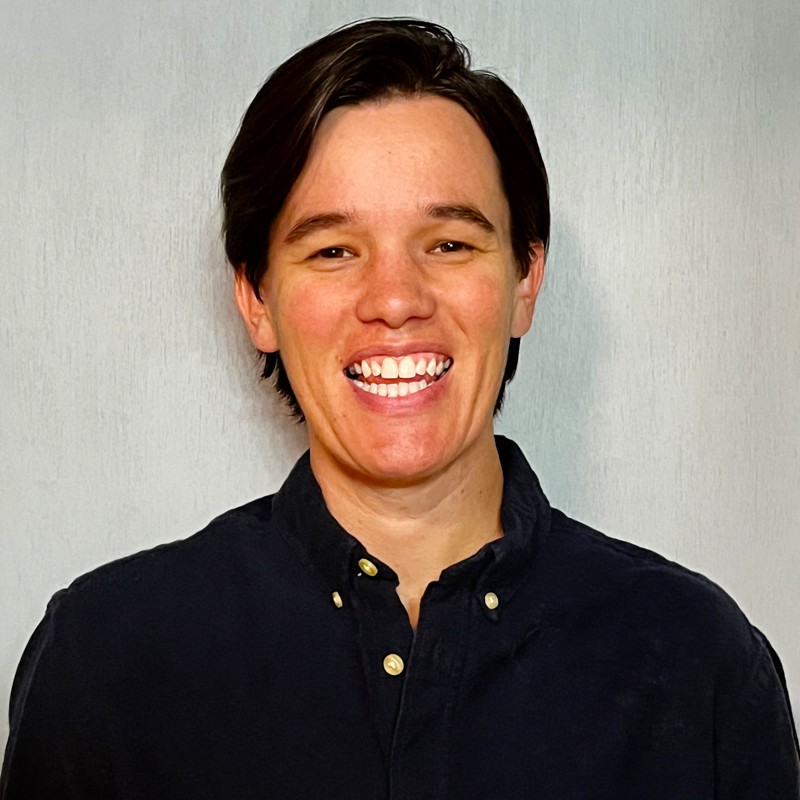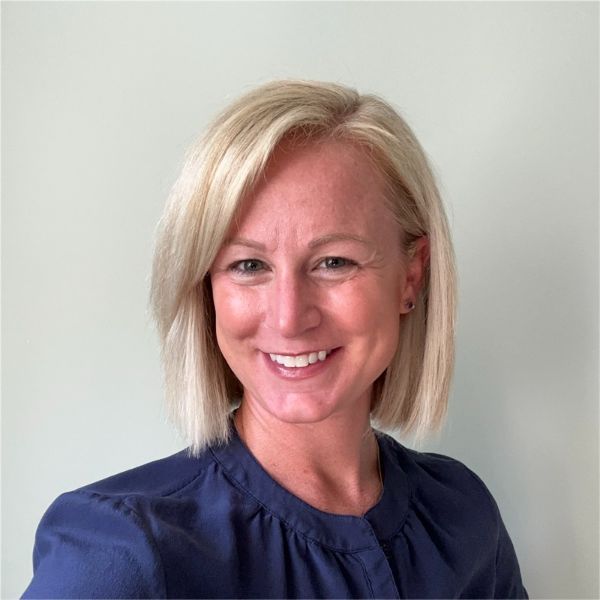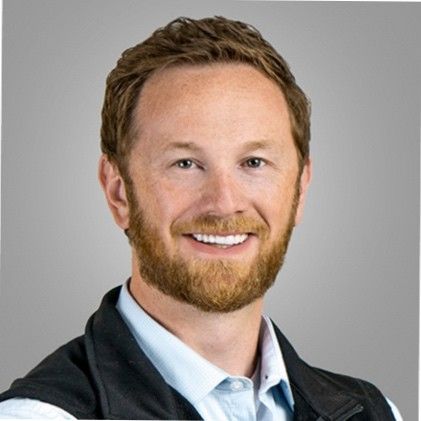
In this day and age, if you are not on social media, then you are bound to get left behind. That is why you need to start using social selling to build your brand and do it consistently! Join Samuel Gbadebo and Omar Khateeb as they dive into the second part of discussing the value of social selling in the Healthcare Sales Space. Don’t be afraid of diluting your message; feel free to post a lot. Don’t let your haters scare you from posting. Learn what building a brand on a platform, particularly LinkedIn, can do for your territory, team, and career.
—
Watch the episode here
Listen to the podcast here
The Power Of Social Selling Part 2 With Omar Khateeb
We continue our discussion with Omar Khateeb as we get into the heart of the power of social selling. We go over some of the do’s and don’ts on the LinkedIn platform especially and how to think about bolstering your brand on a social media platform that’s going to give you access and thought leadership across the board within your space. As always, thank you for reading. I do hope you enjoy part two of this interview.
—
The one thing I tell salespeople is aside from it’s helpful to post, a lot of great marketing has nothing to do with being wildly creative or viral. It’s just consistency, but along with it, we’re in a new age. You have to develop this skill already nowadays. Most of our communication is digital and written, like email, comments, or social posts. It’s for you to develop that ability to copyright, persuade, and think through, “What am I going to put in this to get it opened and for somebody to take action on it?” You can practice here and there on emails or you can start getting in the habit of doing that on LinkedIn. It’s a system that builds on itself.
You nailed it. You’re 100% correct. I’ll say one last thing about knowing what to post. Try to sit down and maybe give yourself 3 or 4 posts that you would want to write before you post one of them. Even as content creators, we’re supposed to be making a month’s worth of content beforehand.
When was the last time you ever did that, honestly? You’re right, though. I’ll share this from my journey. I started my business. What’s interesting is that during the first few months of the business, towards the middle of Q1, I wasn’t producing as much content. You started your business many years ago. When you’re first starting, you’re doing all things. I’m learning QuickBooks, setting up a website, and doing all these different things. My content creation went down. I was like, “I’ve got to get back into it.”
If you look at my revenue, my best month was my first month in business. I finally surpassed it. The reason why is that was the month I produced the most content and put out most the most stuff. I have to remind myself, “You have to make time for this.” There’s an entrepreneur you probably see on LinkedIn, Alex Hormozi. He’s very famous for the business he built. He says that when it comes to ads, it’s a 2:1 return. Cold outreach is 1:1. That’s quadratic. The only thing that scales is word of mouth. That’s what social media is. It’s word of mouth at scale. The sooner you start playing with it, the sooner you start to experience those effects.
I want to bring up a nice comment here from Keila Resto. She says, “It’s almost as if simply commenting makes it about yourself, whereas adding a question focuses on the surgeon or physician.” Keila, I would add to that. The key hack here is there are different reasons why the algorithm prioritizes. When you see a post with a bunch of comments getting the number one spot, which is the most relevant comment, that’s free advertising for yourself to everybody.
One of the key million-dollar tips here is to tag the person in the first sentence, “@So-and-so, that’s a great point.” Ask a question or make an observation and drive that engagement. Other surgeons don’t get replied back because they don’t tag the poster or the person who posted. Keila, that’s a great point. Samuel, before I move to the next and last point, are there any other closing remarks on knowing what to post and when to post?
You said something that I thought was funny. When you first started your business, your biggest month was when you were saturating the world with your content. That’s when stuff picked up. That does get cyclical. The best thing you can do for yourself is to get into a groove as soon as possible. Get a minimal groove. If it’s once a week for you, stick to once a week. Make 3 or 4 posts ahead of time and know that you’re going to be able to disseminate those posts over the next four weeks. If it’s twice a week for you, stick to twice a week. Get into a groove and stick with it no matter what.
I promise you that 3 to 6 months from now, you will be experiencing something different. Depending on what your goal is, we can’t say what it is you’re going to experience, but you will experience something different than what you’re currently experiencing. Out of all the things we’re sharing, if you can find a groove, stay consistent with that groove, keep those rules in mind about creating value, don’t directly sell, and think about what’s valuable to your audience, you’re going to see yourself go places.
[bctt tweet=”A lot of great marketing has nothing to do with being wildly creative or viral. It’s just all about consistency.” via=”no”]
It’s solid advice. Even myself, when it comes to creating content, I’m trying to get into a groove as well and bundle things so I can do my content creation on Sundays and, at the very least, try and schedule some posts and stuff. It’s getting in a groove and a habit. If you don’t mind, I want to share something, especially with the younger and older in any profession. Let’s say it’s the new professionals who are posting on LinkedIn.
One of the biggest regrets of my career came when I worked at a company years ago. It was a very toxic place. What got me to move to San Francisco was I started writing an article a week. I did this for two years straight. Every week, I was putting out a deep and well-thought-out article on robotics or marketing. Those articles paved my way to Silicon Valley. Somebody in the company made a comment about an article I wrote.
I was a young guy. They made me feel ashamed, talked down to me, and made me feel bad. It hurt me so badly that I stopped writing. I have no regrets in my career. My one regret is that I stopped. I’m still paying the price for that because when you write every week for two years, you develop such a skill. I stopped for over a year or maybe more than that. I’m now getting back into doing that. That’s the biggest regret in my career.
If you’re in that position, people are going to throw shade at you and make comments. It’s hard to make those comments when your customers are saying, “We love this. This is providing value to us. We appreciate it.” Nothing makes me more disappointed than when I see physicians and surgeons posting their cases or posting a picture with a product and not a single one of their reps is to be seen engaging or showing them some love. Yet here’s a surgeon talking about how excited they are about using a new product.
Those are flat-out missed opportunities right there. To whoever is doing that, let Omar’s reminder resonate with you. Make sure that you’re paying attention to any one of your providers that are putting themselves out there and supporting them. I want to add one more thing, though. We have seen it. Everyone, keep in mind that you want to provide value at the end of the day.
A simple way to gauge that is with whatever you’re about to post, think to yourself, “If I was on the other side, could I appreciate that?” Even if you get a little bit of a yes posting, you don’t have to have this big thing. If you feel a little bit of, “I would appreciate that,” then post it. If you find yourself questioning, “Could this be seen as offensive?” I always err on the side of caution.
Don’t post it, especially in this med tech space where unless you’re a startup or you don’t have a lot of red tape around what you can and can’t do, you don’t want to put yourself in anything funny because these things don’t die. They stay out here and find a way to come back. You want to be mindful. There’s so much to say without being inflammatory or offensive. There’s so much positive and fruitful commentary and questions you can ask, especially in these dynamic fields.
Even if you get a little bit of, “I would appreciate that,” make sure you post it. Please, no one should feel like if they don’t post in a given day or if they don’t post 5 or 5 times a week, then they’re going to lose traction and everything. Don’t fall into that trap, clip content together beforehand, disseminate it in a sequence you can stick to, master that, gradually increase it, and let that be your guiding light.

Let’s cover the last key point here. The last one is a good segue. It’s the importance of consistency. I feel like we beat that one to death. Remember the old Men’s Wearhouse commercial with the guy with the beard who’s like, “You’re going to the way you look.” I met that guy. That’s the actual founder of Men’s Wearhouse. I met him backstage at an event and asked him, “You did such an amazing job with Men’s Wearhouse. What’s your best advice on marketing?”
I’ll never forget it. He does have a deep raspy voice. He’s like, honestly, “Marketing has very little to do with being super creative and having fancy this and that. It’s just consistency. It’s just showing up.” It’s true. The more I study mass persuasion and marketing, the more I realize that a lot of it is, “Can you hold attention? If you can do it long enough, at some point, you can persuade in some direction.”
If you think about what all medical salespeople learn, especially the ones who have been in the industry for more than twenty years, it’s like, “You have to have seven touch points on a prospect to move them forward. You have to keep showing up. Be at the hospital.” What does that all have to do with? It’s being visible and consistent. You can do that at scale while looking good to other potential employers and opportunities while you sleep through LinkedIn. You’re welcome, LinkedIn. There’s your commercial.
We did establish how important consistency is. Vanessa Jaramillo said something that I did want to address, “Don’t let the haters faze you.” You talked about that pivotal point in your career, Omar. If you post something and you get yourself a hater, you should smile because that means you’ve gotten that much visibility that you’re bringing out the people that have nothing nice to say. Let it be some motivation.
A lot of these things we’re talking about are habits of the mind and superpowers. Learning to not care about being embarrassed is a superpower. I posted a video once. It was a five-minute-long video where I whiteboarded something. I posted it. The next morning, I realized that it was reversed. Everything was backward. I was like, “Whatever.” If you start getting some hate, you’re onto something.
There’s somebody who’s a bit of a med device celebrity. He has a nice TikTok. It’s Jacob MacLaughlin. He started posting more on LinkedIn motivational stuff. I love his stuff. It was inspiring to me because he posted something about gratitude and everything. Sometimes he’s doing it while he’s on a walk and stuff. He messaged me. He was getting some hate from people because they’re like, “You shouldn’t be posting stuff like that.” I’m like, “Haters are going to hate.” He doesn’t care. He runs in a stride. If you’re not following Jacob, go follow him.
I’m glad you brought up Jacob. I was talking about the personal touch. He has mastered that personal touch. He’s saying all these things.
He’s got that great mustache too.
[bctt tweet=”Social media is really word of mouth that scales.” via=”no”]
He has a personal spin and personal touch on every single one of those posts. It goes a long way. There’s something, though, that Joshua Day said, “I started to contact the marketing departments for the companies I carry so that I can create posts based on my specific market and the procedures or products I want to highlight. They have the info pre-packaged. You get to add your personal touch.” Joshua, you’re asking how do you do what you already intended to do while creating a personal touch? Omar, what do you think? Do you think that’s what he’s asking?
What he’s asking is, “Is this going to be good content?” My answer without seeing it is it’s not going to be that great because these are coming from med device companies. One, it’s great to do that because now you have some product content. You can use that here and there. At the end of the day, here’s what’s going to get a surgeon to lean in and say, “I want that gentleman in my room covering my cases. I want to be doing business with him.” Go back to what Samuel was mentioning at the beginning of this talk, which is, “What value are you adding? What are they learning from you?”
This is what got me a name in our industry of being a provocative marketer. For context, Joshua doesn’t work for one company. He’s a distributed source for many. I would ask for forgiveness and not for permission. Get the content and see what it’s like. You should be open to making your content with some of the products you have. Maybe there’s a surgeon who you like a lot, and they’re doing a good job. Ask the surgeon, “Do you mind if, after the case, I do a quick interview with you from my iPhone and ask you what you like about things?” It’s way better than a highly-produced video.
A highly-produced video, whether you put a personal spin on it or not, will never come off as well as an interview with a third party that’s part of your customer audience that’s giving you a review on the product. The way you set that up is to ask them legitimate questions and questions about any product that fits with what that product can do. What I’m getting at is you don’t need to use that provider to bolster your product if you have that provider be authentic and truthful about what their experience is. They had a positive experience with your product, not a negative one.
Make sure ahead of time.
As long as they have a positive experience, let them be authentic and truthful in whatever they want to say. That’s going to go a long way than cleaned up and polished marketing pieces.
Get the content out there.
If all you have is cleaned up and polished pieces to work with, and you can’t do anything like what we’re talking about, then put your spin on something valuable or your $0.02 before you post it. Don’t say, “This is great. It’s new,” and repost it. Put your spin on it and ask an engaging question or something that anyone in your audience could appreciate.

Joshua has a great question. Shannon Mays has another question, “It’s certainly challenging to be consistent but also a slippery slope in terms of putting out too much content. You don’t want to dilute your message.” I disagree. Here’s why. Everything is a slippery slope until something pushes against it. The slippery slope argument doesn’t hold here. There’s no such thing as diluting your message. Let me back up. There is such a thing where you can dilute your message.
People aren’t paying that close attention to every single thing you’re posting, even if they try to. There are some people that I’ve tried to do that with. LinkedIn does not allow you. Your content isn’t going to go in front of all your audience. This is a key pro tip. If there’s a surgeon that you’re trying to follow and you want to make sure that you get notified when they post, go to their LinkedIn profile page. On the top right-hand corner, LinkedIn released a new feature where there’s a little bell icon. Those are notifications.
With that being said, this is all about putting out things, learning, analyzing, evolving, and then reiterating them. If you look at my content, I deal with medical sales and marketing. Do I have a lot of content completely unrelated to that? Yes. Why? Doesn’t that dilute my message? It could, but I also need to find ways to engage people. Think about a funnel.
Not everybody is ready to talk about using social media to sell. There are people who are in sales which have an interest in strategies, persuasion, or something. I need to find ways to get in front of that person and get that person to lean in because that’s when they start getting more interested in the problem I’m knowledgeable about, the solutions to that problem, and at some point, the product that I sell. That’s how I like to think about it. Samuel, what do you think?
This is not a deflection, but you have to think.
You cannot deflect this one.
What is your goal on the platform? I know Shannon. Shannon is awesome. He was my second episode ever. We’re on Episode 93. I’m talking about Shannon because he has seen it all as far as our groove. You have to keep this in mind. What’s your goal? If your goal is to communicate a very specific message to your audience to become the resource within a certain space and to be seen, “I can always provide this to my audience,” then some of what Shannon is saying is something you want to be mindful of. I was saying, “No one should feel forced to pump out content that they don’t even like because they’re trying to make sure they have done it once a day.” I don’t agree with that. You haven’t said that, Omar. I do not agree with anyone that has that philosophy. That can hurt you.
It’s continuing to pump out content.
[bctt tweet=”Everything is a slippery slope until something pushes against it. There’s no such thing as diluting your message.” via=”no”]
It’s to get context out. LinkedIn will take your content and say, “Your content is no longer being deemed valuable by your audience. We’re going to put the brakes on propagating your content.” That’s when you start to see yourself go from, “I used to have 5,000 impressions per post. Now, I have 500. What’s going on?” Going back to Shannon’s point, ahead of time, before you have to post, think about what’s valuable, try to find a consistency that you know you can stick to, and do everything you can to stick to that. When you master that, increase it by one more post a week. That will prevent you from diluting your message, killing your traction, or doing anything that’s going to turn your audience off from what you’re trying to say.
This works on other platforms. I love him, but Gary Vaynerchuk’s thing is, “You should be putting out this many pieces of content a day.” That works on Instagram, TikTok, and LinkedIn. Not everybody has that amount of content. If you’re giving talks and getting out of a bunch of content on certain topics, maybe, but most of the people who are reading this don’t. At that point, they’re going to be putting out content, articles, and random things.
Samuel is right. If you do too much of that, the algorithm will slow down some of your traction. That being said, sometimes, when you do post, you need to go back with a critical eye. As a salesperson, you need to get better about this even when you do emails with everything you do, be aggressively curious, and say, “Why didn’t this perform well? Maybe it’s because I didn’t use certain hashtags on this one.” Maybe you read it and it’s like, “This is a good post, but my first sentence didn’t have a good hook. It wasn’t good enough for people to stop scrolling.” It could be a variety of things.
Honestly, for those of you that are aspiring to be content creators, we teach this in our program. There’s software out there that will aggregate everything you’ve ever done on LinkedIn and show you as clear as day what’s working and what’s not working. That’s going to be a very helpful way to start harnessing better content to get more of a response. There are a lot of tools out there for those of you that are aspiring to be content creators. For those of you that have been wanting to, but you haven’t allowed yourself because you’re not comfortable, take heed of what we’re saying because these things would get you comfortable, get you out there, and get you into a beginning groove.
We’ve got another question. This is a good one. This is right up your alley, Samuel. Akshaya James says, “For those aspiring to break in, should we focus on a niche specialty when curating and commenting on content or focus on overall maximizing disability?”
This is so cool because we have a program for those of you that are wanting to enter the space. I love that you brought this question up because this is what we work with in addition to helping medical sales reps. If you’re truly aspiring to break in, you should be more open than not. We talked to a lot of people that want to do this in the different fields out there. If you want to be in medical device sales, for example, then it does behoove you to focus on those types of organizations to get involved with whatever they’re posting and to comment back and forth if that’s where you want to be.
It also behooves you to take your profile and showcase that your profile is someone ready to get into the medical sales space, not just someone that wants to be in it but someone that’s ready based on the transferable skills you’re bringing from whatever else you were doing. If you’re not sure and you want to be more visible, then be wide open. Get involved with some medical devices, pharma, dental, and diagnostic and see what resonates with you more as you continue to explore and see where you’re a good fit. It depends on your goals.
I can add one little tip. There are a lot of people who want to get into this industry because it is very lucrative, high-end, and great. From now, you have to start developing the discipline of self-education. In putting yourself out there using LinkedIn, not only have I done it myself, but with some of the people who I’ve mentored early on, there’s one person in particular who got in with no experience.

Let’s say you’re trying to break into orthopedic surgery. Aside from following the orthopedic companies and connecting with the hiring managers, connect with your customers and look at what orthopedic surgeons are posting because not only can you learn from the post but read the comments. You’re educating yourself. If you get lucky and you get an interview with a hiring manager, you can speak the language.
I’ve learned more in those LinkedIn posts by orthopedic surgeons than I learned in medical school and my orthopedic modules. It’s reading those comments and learning the language of medicine, how you speak as a surgeon and everything. If you get braver, these surgeons are nice. It’s asking even a simple question, “Dr. So-and-so, thank you so much for this post. What was so difficult about this case? What made it easier?”
There’s a reason why doctors are posting their cases here on LinkedIn and not on a physician-only network like Doximity. They don’t want just their peers commenting on these posts. They want other people. Akshaya, one of the things I would recommend is doing that because it’s a system. You’re learning on the fly the language of medicine, how to engage with a surgeon and all the things you’re going to have to do as a salesperson.
At the same time, all those hiring managers you connected with are publicly seeing, “Who is this person?” They’re connecting with some of the prospects we’re trying to sell to. You’re coming in with no background. You have something of value, which is this person publicly showed that the surgeons engaged with her. That’s what I do. To Samuel’s point, you can focus on a niche, but then if you do this in a systematic way, things might come your way without you knowing. How many opportunities business-wise have come to you on LinkedIn that you never even thought of?
You make a great point. The key point that Omar stressed is to put yourself out there and provide valuable engagement with the audience that’s already out there, like these surgeons and the other reps. Provide valuable public engagement. Everyone is going to see that you’re someone that is a good candidate to consider in that industry.
We’re going to be wrapping things up very shortly. Before we wrap things up and everything, everybody who registered for the webinar is going to be getting communication from you and your team. Was there anything specific you wanted to share? Are there any special offers or giveaways? We’re not giving away a car.
Visit EvolveYourSuccess.com. If you’re reading this and you’re saying, “I’m ready to take it seriously. I want to develop a brand,” whether it’s to grow your customer base, get you a new opportunity within your organization, or develop a brand of awareness around disease and/or specialty, go to Evolve Your Success. Click Improve Sales Performance, select LinkedIn Selling, and get in touch with us or someone from our team. We will have a conversation about how you can make that happen for yourself.
If you’re someone that wants to get into the medical sales industry, maybe follow this crowd, you’re looking for a new opportunity somewhere, or you’ve been to the distributing space, you’ve worked for a number of companies, and now you’re saying, “I want to get myself into a W-2 position with a larger organization,” visit Evolve Your Success, select Attain Medical Sales Role, fill out an application, and have a conversation with us. As far as that’s concerned, the power of social selling is real. It’s not going away. It’s only going to become more important, more relevant, and probably more regulated. Take advantage of it, put yourself out there, and start getting some traction.
[bctt tweet=”If you want to get into medical sales, you need to start developing the discipline of self-education.” via=”no”]
Visit EvolveYourSuccess.com. There are great sales resources there. Keep in mind that Samuel’s company not only focuses on helping you get into the industry, and that’s why it’s Evolve Your Success, but also, once you’re in, evolving and elevating your career beyond that. I don’t think it’s talked about enough, but there’s so much value, in my opinion, in investing to work with programs and coaches like Samuel because they have been doing this for a while. They have been getting people into the industry and helping them out. It’s a shortcut. You can go and learn this stuff on your own.
Number one, you’re going to waste a lot of time. There’s no guarantee that it’s going to work. I’m not making any claims for Samuel, but I’m going to say it myself. If you are able to get promoted or get into this industry, you’ve seen an increase in your salary, probably at a minimum of 20%, 30%, or maybe even more. It’s finding a way to invest and say, “I’m going to work with experts. I’m going to work in a program where they’re going to not only coach me but hold me accountable and do all these things.” It’s worth every bit.
Take Uncle Warren Buffett’s advice, “The best investment you can always make is yourself.” That’s the best investment. Invest in yourself and your skills. For those who know, Grant Cardone, as wild as he is, tells me, “Until you have $100,000 in the bank, don’t waste the money on investing. Invest in your skills to get to that $100,000.”
We’ve got a nice comment from a LinkedIn user. We love it, “It’s such insightful advice. I appreciate your perspective on self-education and your encouragement to reach out. Often it’s easy to dismiss our own contributions to the conversation rather than waiting to feel ready. Here’s to putting ourselves out there. This has been such a helpful and inspiring conversation.” Thank you so much, LinkedIn user. To whoever said that, we appreciate it. Christine, thank you so much. That was very kind of you.
We have one more question coming up. Joshua Day, on the feed, said, “A lot of the surgeons are fellows as well. They’re very welcoming to your questions and everything.” That is true. At the end of the day, always remember that for physicians, there is a culture of continuing education and teaching. They love it, even medical salespeople and the ones who have been classically and traditionally trained.
One of the easiest ways to find yourself in a new OR is to talk to a surgeon and say, “I’m new. I would like to shadow your case and learn from you about the XYZ technique.” They will be like, “Come by my room on Monday.” You’re doing the same thing digitally on LinkedIn at scale. With that being said, Samuel, close us out with some final words and thoughts.
Be authentic all the time but take opportunities to let people know what that means for you as often as you can. This platform helps you do it. Our whole company is all about evolving your success. We know you’ve had significant levels of success. It’s time to allow it to evolve by getting involved and putting your brand out there. Don’t be afraid. Get out there and do it. You know where to go if you want those additional resources to make it happen as impactfully and fast as it can.
I can’t stress it enough. Go to EvolveYourSuccess.com. You can’t argue. It’s free. A lot of times, it’s those free resources that reorient and reframe your mind and give you a different perspective on how to look at things. That’s the first path to progress right there. Samuel, it has been such a pleasure. We’re going to be doing this again soon. I had such a blast. Hit Q3 hard. Best of luck with Q3. To my guest, Samuel Adeyinka, thank you so much for joining. We will see you all next time. Be sure to go to EvolveYourSuccess.com, everybody. Take care.
—
That was Omar Khateeb and myself talking about the power of social selling. As a reminder, that was me on his show. We want to bring that home to our audience so you can all reap the benefit and the value from our discussion. Maybe you’ve been reading this and you’re thinking to yourself, “I’m in medical sales. I want to understand how to do this and make something happen.” If that’s you, you need to make sure you visit EvolveYourSuccess.com, select Improve Sales Performance, click on the LinkedIn program, and have a conversation with someone from our team. Let’s get you on the path to thought leadership and give you access as you’ve never seen before.
If you’re someone that’s wanting to get into the industry and you’ve been reading this and the desire is there, but you’re not quite sure how to do it, or you’ve been trying to do it and you’re not quite getting to that next round in your interviews, visit EvolveYourSuccess.com, select Attain Medical Sales Role, fill out the application, and have a conversation with us. Let’s get you on the right track to your dream career. As always, we do our best to bring you guests and provide value to give you insight into how to perform better within your medical sales career, how to get into a medical sales career, and different ways to get access in your field. Make sure you tune in again for another episode.
Important Links
- Omar Khateeb – LinkedIn
- Jacob MacLaughlin
- Shannon Mays – Previous episode
- Improve Sales Performance
- LinkedIn Selling
- Attain Medical Sales Role
About Omar Khateeb
 My story might be a shock but my mission is simple: I want to change how medtech companies sell and market to physicians by using social media in a powerful new way.
My story might be a shock but my mission is simple: I want to change how medtech companies sell and market to physicians by using social media in a powerful new way.
Here’s my story:
Growing up in the US/Mexico border town of El Paso, Texas I am a first generation American. The idea of discipline, honor, and hard work were engrained in me by my parents. I went to medical school on an academic scholarship and dropped out in 2012 to pursue a career in technology. I found my way into an exciting surgical robotics company called Mazor Robotics, the first robotic spine company. I started off “carrying the bag” as a clinical sales rep before quickly getting promoted to US Marketing Manager for my ability to do great patient marketing campaigns and market the technology. The past decade has been spent at various high-tech startups driving growth and technology adoption through growth marketing and category design. This includes two publicly traded surgical robotic companies through their IPOs as well as co-founding a consumer product for men’s fashion.
In 2022 I launched my own venture, Khateeb & Co, with a mission to help medical sales people drive technology adoption using social media. I also launched a media company called “The State of MedTech” which helps physicians and industry professionals learn more about the latest trends in medicine through a podcast, webinar, blog, and live show. The majority of the episodes offer CME credits via a physician’s reflection. My areas of focus are category design, driving adoption of new technologies, and developing strategies to channel attention towards generating demand. In my spare time, I love teaching and mentoring young professionals. Im an avid reader and also paid public speaker.
You can follow me on Facebook, Instagram, Twitter (@OmarMKhateeb) or Youtube (Mind Loom with Omar M Khateeb).
Love the show? Subscribe, rate, review, and share!
Join the Medical Sales Podcast Community today:



















































































